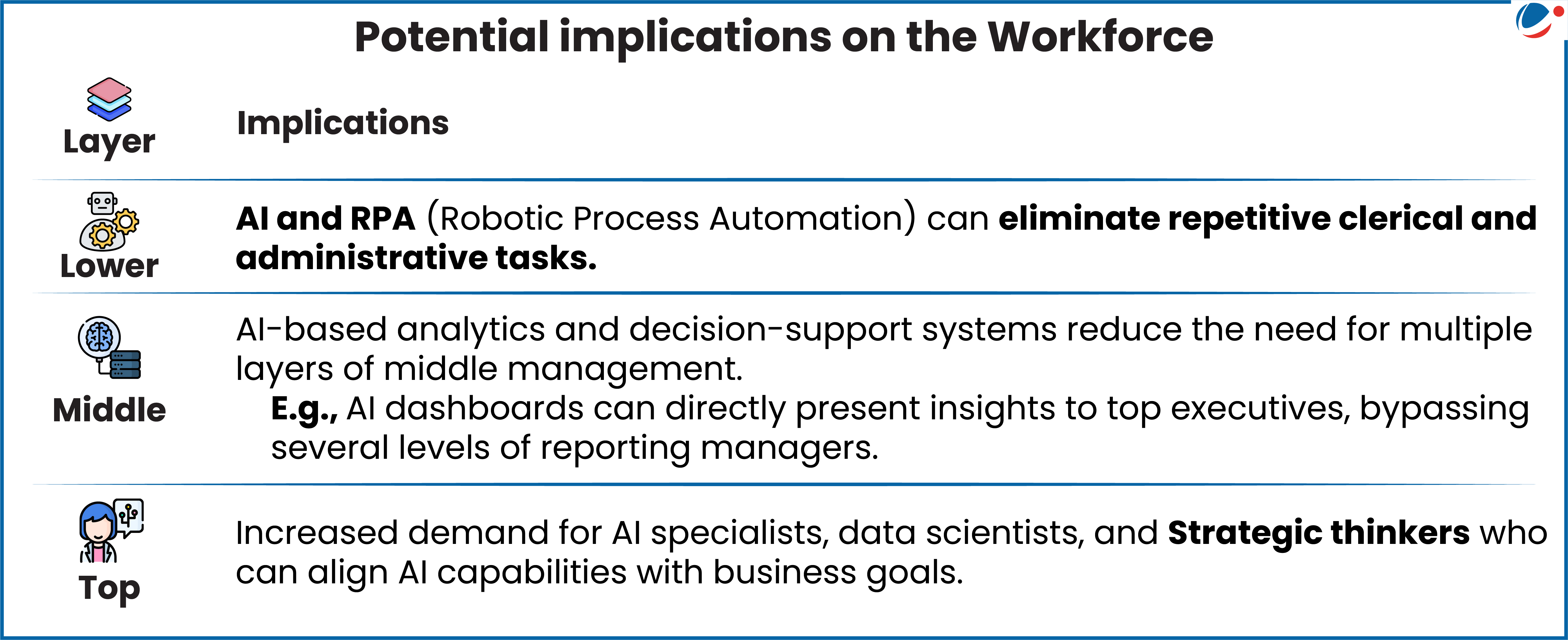Global Tech-giant, Microsoft, recently, announced to lay off 3% of its global workforce (estimated around 6000 people) that would affect employees across all levels, teams, and geographies.
- The reasons behind these layoffs include slashing unnecessary layers of management and seizing the benefits of new technology including Artificial Intelligence (AI).
How AI is poised to change the Workplace structure?
- Traditional pyramidal structure: Traditionally, organizations have been modeled with broad base of lower-level employees, a mid-sized managerial layer, and a narrow top leadership tier.
- It reflects a hierarchy, clear chain of command, with layers of supervision and control.
- Hourglass structure: In this setup, AI is gradually taking over the role of coordination, management, and decision-making, with a wider top layer of strategic leaders and a growing top tier of knowledge workers while the bottom diversifies into a mix of people and tools.
Potential implications on the Workforce

Conclusion
The shift from a pyramidal to hourglass structure reflects a broader transformation in how organizations create value in the AI age. Efficiency replaces supervision, insight replaces oversight, and strategic agility becomes more important than traditional control mechanisms.





